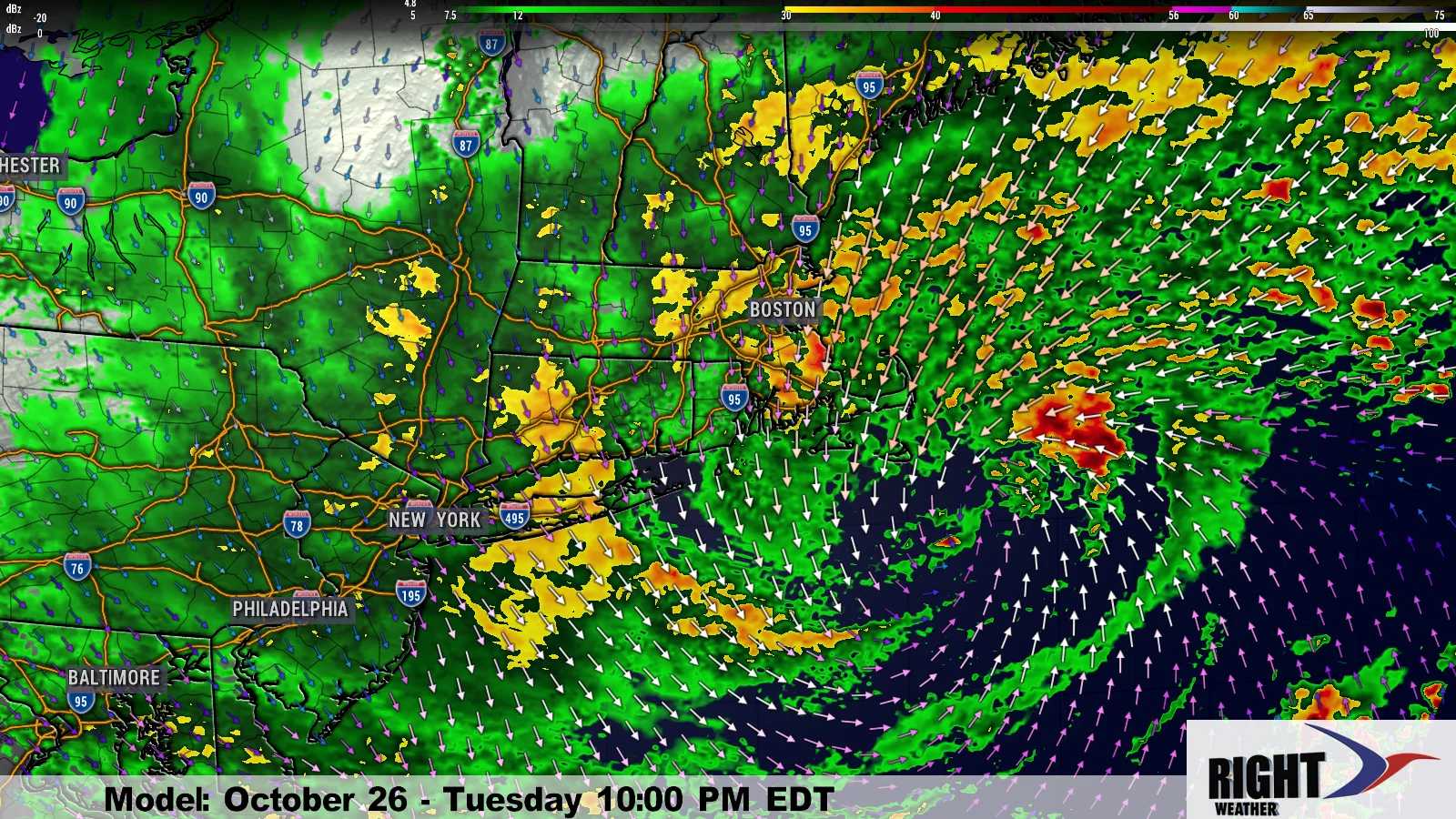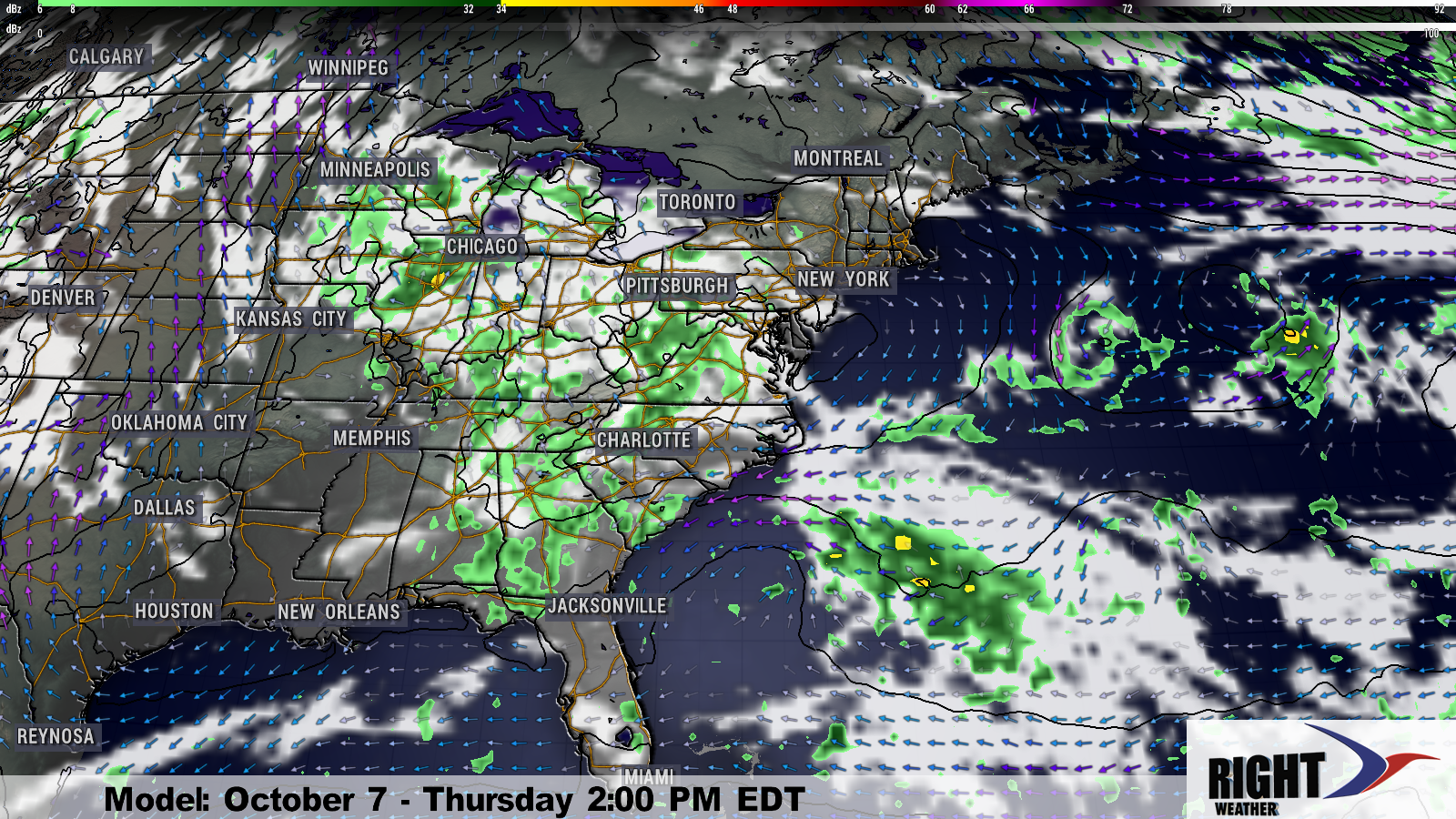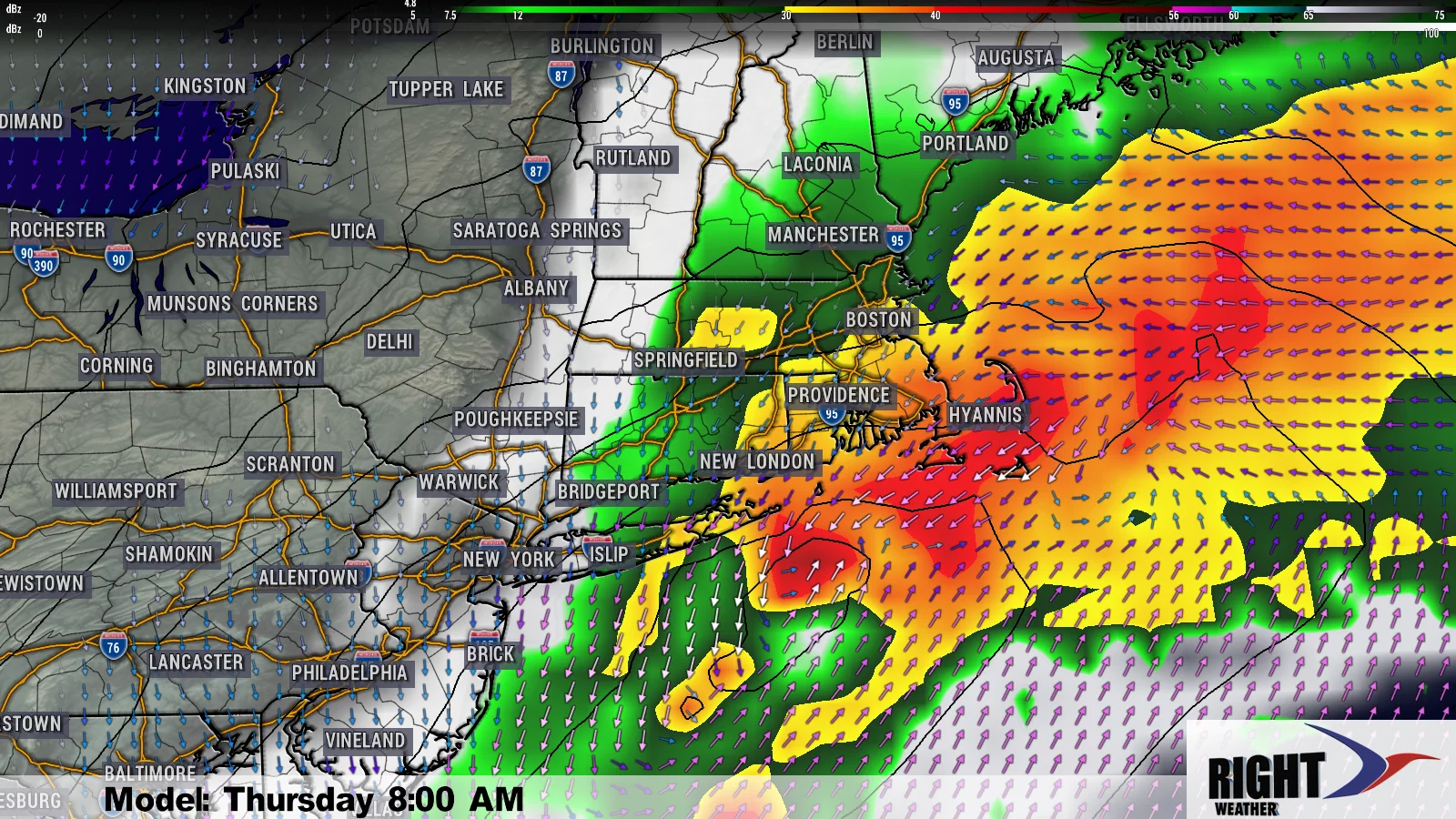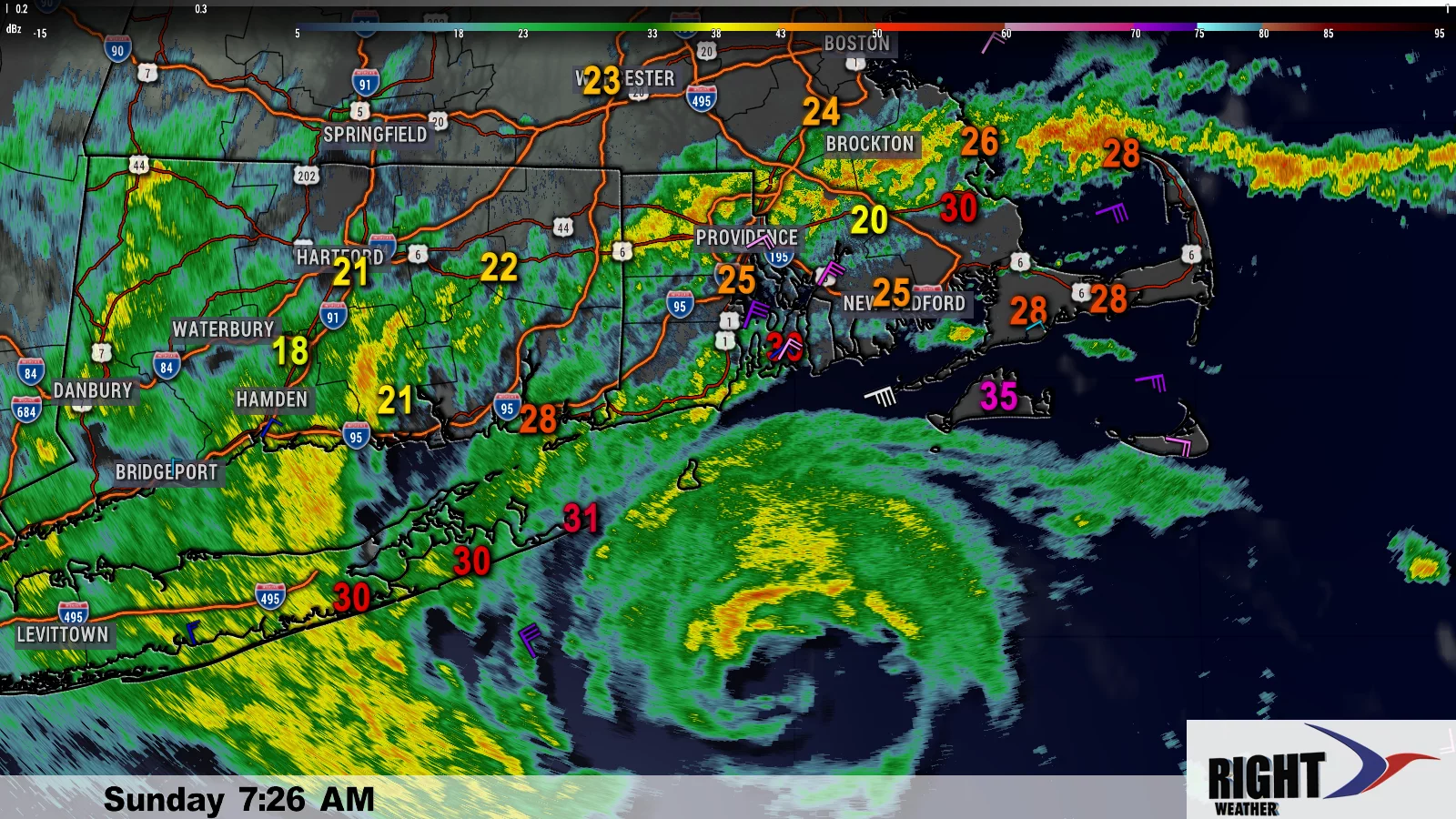NOAA Report on Northeast: Warmer, wetter climate ahead
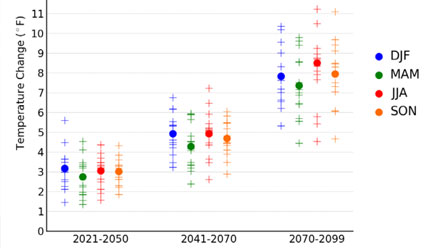
A technical report issued by the National Oceanic and Atmospheric Administration (NOAA) outlines a future for the Northeast that includes a generally warmer, wetter climate, with an increase in extreme warm temperatures and extreme precipitation events.
The first part of the report gives an overview of the Northeast climate, and focuses on some climate trends that have occurred in the Northeast in recent decades. Some findings on recent trends include:
- Temperatures generally remaining above the 1901-1960 average over the last 30 years
- Greater variability and higher totals for annual precipitation since 1970
- Less frequent extreme cold events sine 1985
- A high frequency of heat waves from 1900-1950, fewer heat waves from the 1950s to 1980s, high frequency of heat waves since the late 1980s – similar to the first half of the 20th century
- Freeze-free season length has increased by about 10 days from 1961-1990 to 1991-2010
Looking ahead, the climate-model simulations based on two (high/low) emissions scenarios revealed the following:
- An increase in temperature – greatest inland and in the north
- Near-term temperature changes are similar in high and low emissions scenarios, but temperature rise doubles by late in the 21st century in a high emissions scenario
- Large range of model-simulated temperature changes, but all models indicate a large amount of warming compared to historical variations
- An increase in the number of 95°F likely – largest increase in the Mid-Atlantic states
- 20-23 fewer days with a temperature below 32°F by mid-century based on the high emissions scenario
- Freeze-free season lengthens by at least 19 days by mid-21st century
- Largest increase in annual precipitation over Northern New England. Less of an increase in Southern New England and Mid-Atlantic
- Increase in number of days with 1″+ precipitation
- Most models do not indicate a statistically significant change in temperature (with respect to 2001-2010) for the near future; however, in a high emissions scenario, the temperature changes are significant at a 95% confidence level by 2055
The purpose of the report is to provide climate information for potential use by the authors of the 2013 National Climate Assessment report.
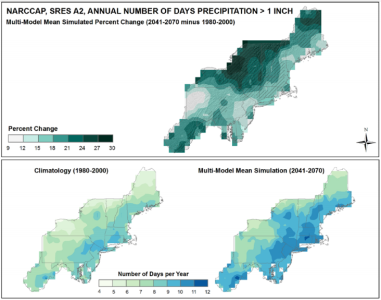
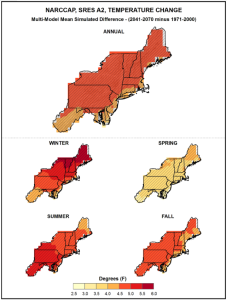
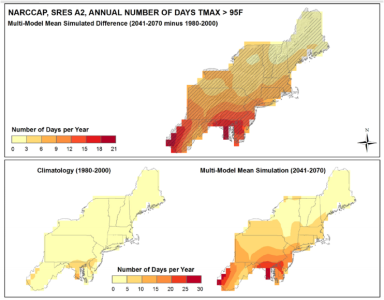
Read the full report: http://1.usa.gov/VT7jov
